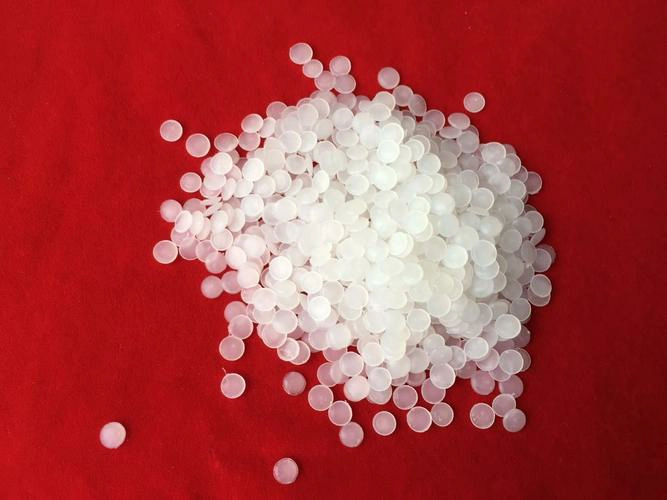Why Is Teflon Still Legal? Understanding The Science, Regulations, And Controversies
When you cook your favorite meals, you might rely on non-stick cookware coated with Teflon, but have you ever wondered why Teflon is still legal despite concerns about its safety? Teflon, a brand name for polytetrafluoroethylene (PTFE), has been at the center of heated debates for decades. While it revolutionized cooking by providing a non-stick surface, questions about its environmental impact and potential health risks have sparked widespread concern. Understanding why Teflon remains legal involves diving into the science behind it, regulatory frameworks, and the measures taken to mitigate risks.
Teflon is widely used in household items such as pans, baking sheets, and even clothing. However, the controversy surrounding its production and disposal cannot be ignored. In this article, we will explore the reasons why Teflon is still legal, the science behind its composition, and the steps taken to ensure its safety for consumers. Whether you're a concerned consumer or simply curious about the material, this article will provide you with a comprehensive overview of the topic.
By the end of this article, you'll have a clearer understanding of the regulatory processes that govern Teflon's legality, the measures in place to protect public health, and the alternatives available in the market. Let's dive in and uncover the truth behind Teflon's continued presence in our kitchens and daily lives.
Table of Contents
- The Science Behind Teflon
- Health Concerns Surrounding Teflon
- The Environmental Impact of Teflon
- Regulatory Framework for Teflon
- Why Is Teflon Still Legal?
- Exploring Alternatives to Teflon
- Consumer Responsibility in Using Teflon
- Advancements in the Teflon Industry
- Public Perception of Teflon
- Conclusion: Why Teflon's Legality Matters
The Science Behind Teflon
Teflon is a synthetic fluoropolymer that was first discovered in 1938 by Dr. Roy Plunkett at DuPont. Its full name, polytetrafluoroethylene (PTFE), indicates its chemical composition, which consists of carbon and fluorine atoms. This unique structure makes Teflon highly resistant to heat, chemicals, and friction, making it ideal for non-stick applications.
Teflon's properties are due to the strong carbon-fluorine bonds that form a protective layer on surfaces. These bonds prevent other substances from adhering to the material, which is why Teflon-coated pans are so effective in preventing food from sticking. However, the production of Teflon involves the use of perfluorooctanoic acid (PFOA), a substance that has raised environmental and health concerns.
How Teflon is Produced
The production of Teflon involves several stages, starting with the polymerization of tetrafluoroethylene (TFE) gas. During this process, PFOA was historically used as a processing aid to ensure the even distribution of Teflon particles. However, due to its persistence in the environment and potential health risks, PFOA has been largely phased out of Teflon production.
Health Concerns Surrounding Teflon
One of the primary concerns about Teflon is the release of toxic fumes when heated to high temperatures. When Teflon-coated pans are heated above 500°F (260°C), they can release harmful gases, including perfluoroisobutylene (PFIB), which is a chemical warfare agent. These fumes can cause polymer fume fever, a condition that resembles the flu and can affect both humans and pets.
In addition to polymer fume fever, concerns have been raised about the long-term health effects of exposure to PFOA and other per- and polyfluoroalkyl substances (PFAS). Studies have linked PFOA exposure to various health issues, including liver damage, thyroid disease, and certain types of cancer.
Studies on Teflon's Health Effects
- A study published in the journal Environmental Health Perspectives found a correlation between PFOA exposure and increased cholesterol levels.
- Research conducted by the National Toxicology Program identified PFOA as a potential carcinogen.
- A report by the Environmental Working Group highlighted the risks of PFAS contamination in drinking water supplies.
The Environmental Impact of Teflon
Teflon's environmental impact is a significant concern due to the persistence of PFAS in the environment. These substances, often referred to as "forever chemicals," do not break down naturally and can accumulate in soil, water, and living organisms. The production and disposal of Teflon contribute to PFAS contamination, which poses risks to both human health and ecosystems.
Efforts are being made to address this issue through stricter regulations and the development of alternative materials. Companies are also exploring ways to reduce PFAS emissions during the manufacturing process and improve recycling methods for Teflon products.
PFAS in the Environment
PFAS contamination has been detected in water supplies across the globe, prompting governments and organizations to take action. The Environmental Protection Agency (EPA) in the United States has set health advisories for PFAS levels in drinking water, while the European Union has implemented stricter limits on PFAS in consumer products.
Regulatory Framework for Teflon
The legality of Teflon is governed by a complex regulatory framework that varies by country. In the United States, the EPA oversees the regulation of PFAS under the Toxic Substances Control Act (TSCA). The agency has taken steps to phase out the use of PFOA and other long-chain PFAS in Teflon production, requiring manufacturers to switch to shorter-chain alternatives that are believed to be less harmful.
In addition to federal regulations, individual states have implemented their own laws to address PFAS contamination. For example, California and New York have enacted strict limits on PFAS in food packaging and drinking water.
International Regulations
Global efforts to regulate PFAS include the Stockholm Convention, an international treaty that aims to eliminate or restrict the production and use of persistent organic pollutants (POPs). Under this treaty, several PFAS compounds, including PFOA, have been listed as POPs and are subject to global restrictions.
Why Is Teflon Still Legal?
Despite the concerns surrounding Teflon, it remains legal due to several factors. First, the material's utility and widespread use make it difficult to ban outright. Teflon-coated products are deeply embedded in modern life, and finding suitable alternatives on a large scale presents significant challenges.
Second, regulatory agencies have determined that the risks associated with Teflon can be mitigated through proper use and disposal. By following safety guidelines and using Teflon products within their recommended temperature limits, consumers can minimize potential health risks.
Regulatory Balance
Regulators aim to strike a balance between protecting public health and ensuring the availability of essential products. The phase-out of PFOA and other harmful substances from Teflon production reflects this approach. While Teflon itself is not banned, the industry has made significant strides in reducing its environmental impact and improving its safety profile.
Exploring Alternatives to Teflon
For those concerned about the potential risks of Teflon, several alternatives are available in the market. These include ceramic, enamel, and stainless steel cookware, each with its own advantages and disadvantages. Ceramic cookware, for example, offers a non-toxic, non-stick surface but may not be as durable as Teflon-coated pans.
Manufacturers are also developing new materials that aim to replicate Teflon's performance without the associated risks. These innovations could pave the way for safer, more sustainable alternatives in the future.
Pros and Cons of Alternatives
- Ceramic: Non-toxic and eco-friendly, but may scratch easily.
- Enamel: Durable and easy to clean, but heavy and prone to chipping.
- Stainless Steel: Long-lasting and versatile, but requires more effort for cleaning.
Consumer Responsibility in Using Teflon
While regulatory measures play a crucial role in ensuring Teflon's safety, consumers also have a responsibility to use these products responsibly. This includes following manufacturer guidelines for cooking temperatures, avoiding scratching the non-stick surface, and properly disposing of old Teflon products.
Educating consumers about the proper use and disposal of Teflon products is essential in minimizing their environmental impact. Many recycling programs now accept Teflon-coated items, providing a safe and sustainable way to dispose of them.
Advancements in the Teflon Industry
The Teflon industry has made significant advancements in recent years to address concerns about its safety and environmental impact. Innovations in production methods have reduced PFAS emissions, while new formulations of Teflon aim to provide safer, more sustainable alternatives.
Collaboration between industry leaders, regulators, and environmental organizations is driving progress in this area. By investing in research and development, the industry is working to create products that meet consumer needs while minimizing risks to health and the environment.
Public Perception of Teflon
Public perception of Teflon is shaped by a combination of media coverage, scientific research, and personal experiences. While some consumers remain skeptical about its safety, others appreciate its convenience and reliability. Understanding the science behind Teflon and the measures in place to ensure its safety can help dispel misconceptions and promote informed decision-making.
Efforts to improve transparency and communication between manufacturers and consumers are crucial in shaping public perception. By providing clear, accurate information about Teflon's risks and benefits, companies can build trust and confidence in their products.
Conclusion: Why Teflon's Legality Matters
In conclusion, Teflon remains legal due to its utility, the measures taken to mitigate its risks, and the regulatory frameworks in place to ensure its safety. While concerns about its health and environmental impact are valid, the industry has made significant progress in addressing these issues through innovation and collaboration.
To protect yourself and the environment, consider using Teflon products responsibly and exploring alternative options when possible. If you have questions or concerns about Teflon, leave a comment below or share this article with others who may benefit from the information. Together, we can make informed choices that prioritize both convenience and sustainability.


